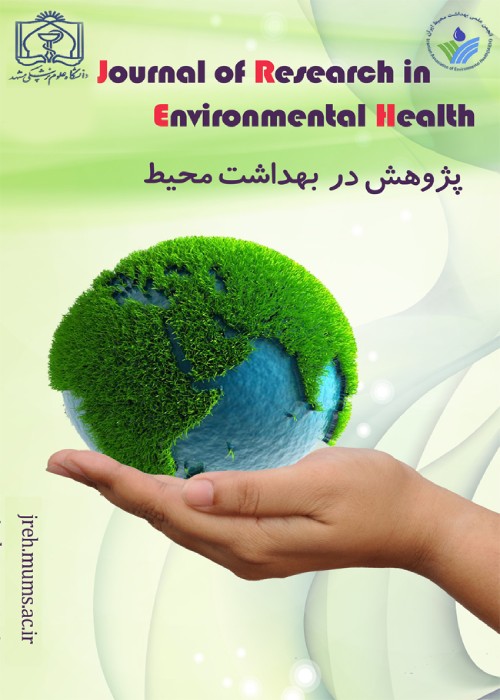Bioaccumulation efficiency comparison of heavy metals in Verbascum speciosum, Acantholimon hohenackeri, Acanthophyllum microcephalum, and Euphorbia macroclada, grown around lead and zinc mines
Author(s):
Article Type:
Research/Original Article (دارای رتبه معتبر)
Abstract:
Background and
Purpose
Phytoremediation stands out as one of the effective techniques for stabilizing, extracting, trapping, or detoxifying pollutants utilizing plants. This cost-effective and environmentally friendly approach leads to the revitalization and enhancement of vegetation, along with increased activity and growth of microorganisms. In this study, the species cultivated in the tailings of the lead and zinc mines of Ravanj were identified and assessed.Materials and Methods
Indigenous plants thriving in mineral tailings were isolated from the root portion. Random sampling of the identified soil and plant species was conducted. The accumulation of heavy metals (lead, zinc, manganese, chromium, copper, nickel, cadmium, and cobalt) in the soil, aerial organs, and roots of plants were quantified. Additionally, the bioconcentration factor of the aerial and root parts and the transfer factor were computed.Results
Among the heavy metals, cadmium, zinc, lead, and manganese displayed the highest accumulations in the leaves of Euphorbia macroclada (3.91±0.17 mg/kg), Verbascum speciosum (751.94±42.67 mg/kg), Acanthophyllum microcephalum (272.11±31.73 mg/kg), and Acanthophyllum microcephalum (594.59±9.76 mg/kg), respectively. Conversely, cobalt, chromium, copper, and nickel exhibited the most significant accumulations in the roots of Acantholimon hohenackeri (3.17±0.55 mg/kg), Acantholimon hohenakeri (20.16±2.28 mg/kg), Euphorbia macroclada (19.51±0.36 mg/kg), and Verbascum speciosum (17.56±0.90 mg/kg), respectively. Euphorbia macroclada demonstrated the highest bioconcentration in aerial parts and roots concerning cadmium metal (0.40). Furthermore, the Acantholimon hohenackeri plant exhibited the highest transfer factor (2.75), primarily associated with lead metal.Conclusion
Based on the findings of this study, the investigated species within the lead and zinc mines of Ravanj could serve as heavy metal-resistant ecotypes, contributing to the reduction of heavy metal mobility and bioavailability, thereby enhancing soil texture quality.Keywords:
Language:
Persian
Published:
Journal of Research in Environmental Health, Volume:9 Issue: 4, 2024
Pages:
349 to 360
magiran.com/p2695409
دانلود و مطالعه متن این مقاله با یکی از روشهای زیر امکان پذیر است:
اشتراک شخصی
با عضویت و پرداخت آنلاین حق اشتراک یکساله به مبلغ 1,390,000ريال میتوانید 70 عنوان مطلب دانلود کنید!
اشتراک سازمانی
به کتابخانه دانشگاه یا محل کار خود پیشنهاد کنید تا اشتراک سازمانی این پایگاه را برای دسترسی نامحدود همه کاربران به متن مطالب تهیه نمایند!
توجه!
- حق عضویت دریافتی صرف حمایت از نشریات عضو و نگهداری، تکمیل و توسعه مگیران میشود.
- پرداخت حق اشتراک و دانلود مقالات اجازه بازنشر آن در سایر رسانههای چاپی و دیجیتال را به کاربر نمیدهد.
In order to view content subscription is required
Personal subscription
Subscribe magiran.com for 70 € euros via PayPal and download 70 articles during a year.
Organization subscription
Please contact us to subscribe your university or library for unlimited access!


